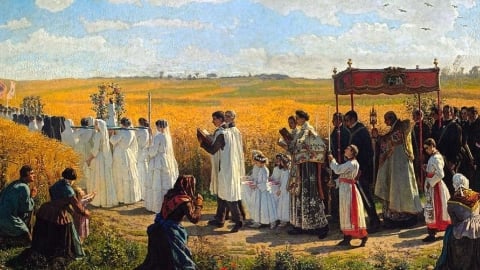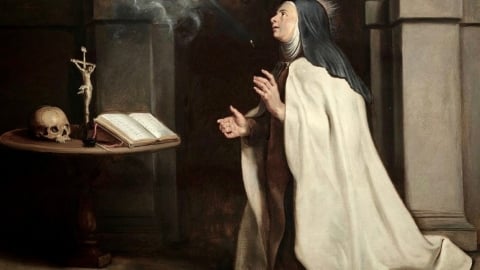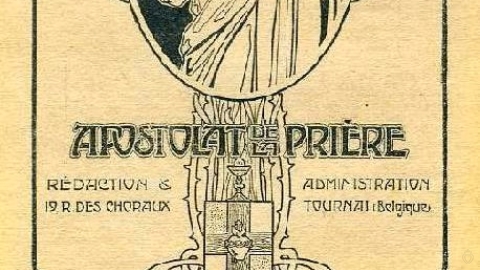St. Pius X and the Queenship of Our Lady

It is true that there has been no solemn pronouncement, i.e., no ex-cathedra Papal statement, nor infallible conciliar definition, that directly concerns Our Lady's Queenship. But the ordinary teaching authority of the Church is a tree with many branches. It comprises not only encyclical letters and other Papal documents and statements directed to the universal Church, but many more particular messages of the Popes that often explain the general pronouncements. Here we present you a summary of Papal teaching of Pope St. Pius X on the doctrine of Our Lady's Queenship.
Ad diem illum, February 2, 1904. Mention of the Queenship occurs in the course of a passage on Mary, Dispenser of graces:
. . . since she surpasses all creatures in sanctity and in union with Christ, and since she was chosen by Christ to be His associate in the work- of human salvation, she has merited for us congruously, as they say, what Christ has merited for us condignly, and she is the principal minister of the graces to be distributed. Christ 'has taken His seat at the right hand of the Majesty on high' (Hebr. 1, 3), and Mary as Queen stands at His right hand; 'she is the safest refuge and the most trust-worthy helper of all who are in danger, so that nothing is to be feared and nothing is to be despaired of, under her guidance, under her patronage, under her kindness and protection.'
This brief mention of Our Lady's Queenship, in the context in which it occurs, has more meaning than may at first appear. The victory Christ won—the reward of taking His seat at the right hand of the Majesty on high—is the conquest of Christ the King; Mary, the associate of Christ in His redemptive work, has also won for her the heavenly throne and the queenly right to dispense graces to her clients no matter what their need. In a prayer the Pope composed at the time of Ad diem ilium, he salutes Our Lady crowned with stars, the moon under her feet, and seated above the angelic choirs.
At the end of a letter to Cardinal Vannutelli, Sept. 8, 1903, St. Pius X added a prayer, asking Mary "our Blessed Mother, Our Queen and Advocate" to continue to hear the prayers of the Church and present them before the throne of God.
Haerent animo, the great exhortation the Blessed Pope sent to the clergy on the 50th anniversary of his own Priesthood, August 4, 1908, calls on Our Lady in the concluding paragraph:
Finally, beloved sons, we heartily thank you for the good wishes you have offered Us so abundantly on the approach of the fiftieth anniversary of Our priesthood, and that Our good wishes for you in return may be fulfilled over- and over We put them in the hands of the great Virgin Mother, Queen of the Apostles. For she it was who by her example taught those first fruits of the sacred order how they should persevere unanimously in prayer till they were clothed in virtue from above…
In his Brief of approbation of the fifth international Marian Congress at Salzburg (July 18-21, 1910) St. Pius X expressed the desire of seeing the Catholics of the whole world consecrated to Mary, the common Mother and Queen of the world.
When Father Gebhard, S.M.M., on Dec. 24, 1907, requested that the world be consecrated to the Immaculate Heart as had been done by Leo XIII to the Sacred Heart, and presented a list of petitions, the Pope said that nothing was more pleasing to him than such a request. It was hoped that the Eucharistic Congress at Lourdes in 1914 might be the occasion for such a consecration and that the Papal Legate would do so in the Pope's name. But the Pope said that 'such a great act would be for some purely Marian event.
In a sermon, Conspectus vester, Nov. 4, 1910, St. Pius X said: "May the Queen of heaven and our advocate, Mary, continue to fulfil her maternal office with us."
The title "Regina Cleri" was approved by Pope St. Pius X and an indulgence of 300 days granted to the invocation "Regina cleri, ora pro nobis."





